Gear of the year: Will’s top picks from 2022
A melting pot of retro, ultra-modern, and utilitarian goodies. And a razor.

While I’ve not quite been at Cyclingnews for the entire year, this is my first full year as part of ‘the cycling industry’, so naturally, I’ve cast off all pretence of liking budget tech to bring you eleven hyper-premium products that I’ve enjoyed this year but you’ve got no chance of affording.
I joke.
I like to maintain a certain reputation as a retrogrouch contrarian, which to some degree has been cultivated based on my own personal budgetary constraints. Old parts are, on the whole, cheaper, and so developing a love for them made as much financial sense as it did emotional. However, I am extremely fortunate in this job in that I have the opportunity to play with some extremely high-end goodies. My top eleven pieces of tech reflect this. There are some retro sensibilities that I cannot shake, there are some utilitarian items, and there is a smattering of top-end gear too, because, however much we all gasp at the ever-increasing price tags, some of it is truly sensational.
I’ve deliberately not over-thought this list. It would be easy to dive into things that are good value, that are ultra-high performance, that are purely aesthetically pleasing, and justify each one based on a set of measurable or semi-measurable metrics. Instead, I have chosen the things I have simply enjoyed using the most; things that spark joy, to coin a phrase that’s very much part of the post-pandemic parlance. They have, in various ways, made me smile, made me feel fancy, performed marvellously, solved a problem, and other things besides.
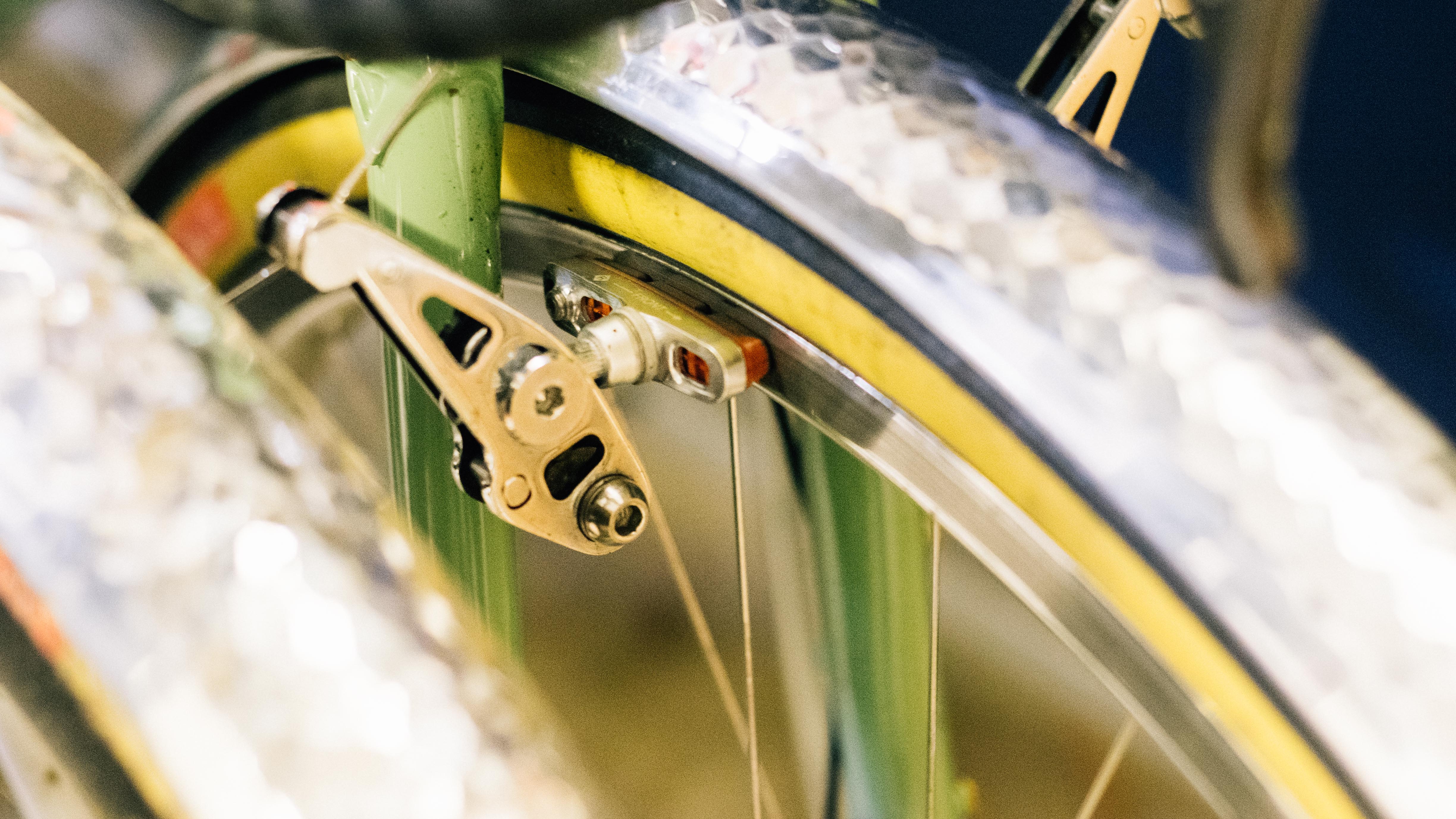
Kool-Stop Salmon brake pads
I know disc brakes are better. I know they stop better, and provide better modulation, and work in the rain. I know the industry is phasing out rim brakes on more or less every bike. It has basically succeeded on all but a few of the best budget road bikes. I know the logical arguments, and maybe it’s just my contrarian nature, but I love rim brakes. I love a radially laced front wheel, unobstructed by a stainless steel disc rotor, I love the satisfaction of finally getting a set of cantilevers to behave. I love that they are field serviceable, cheap to maintain, and easy to understand.
I will continue to run rim brakes, mostly because I have a bit of a vintage bike fetish, but I have one very important rule: I only run them with Kool-Stop Salmon brake pads. I used to think all brake pads were created equal, and I’d spend a few pounds on some black blocks of cheese, which would rapidly disintegrate, leaving their entrails plastered down the inside of my forks. Feeling flush one day I stumped up for some Kool-Stops on a strong recommendation from someone I respected, but not enough to remember who they were, and I have never looked back.
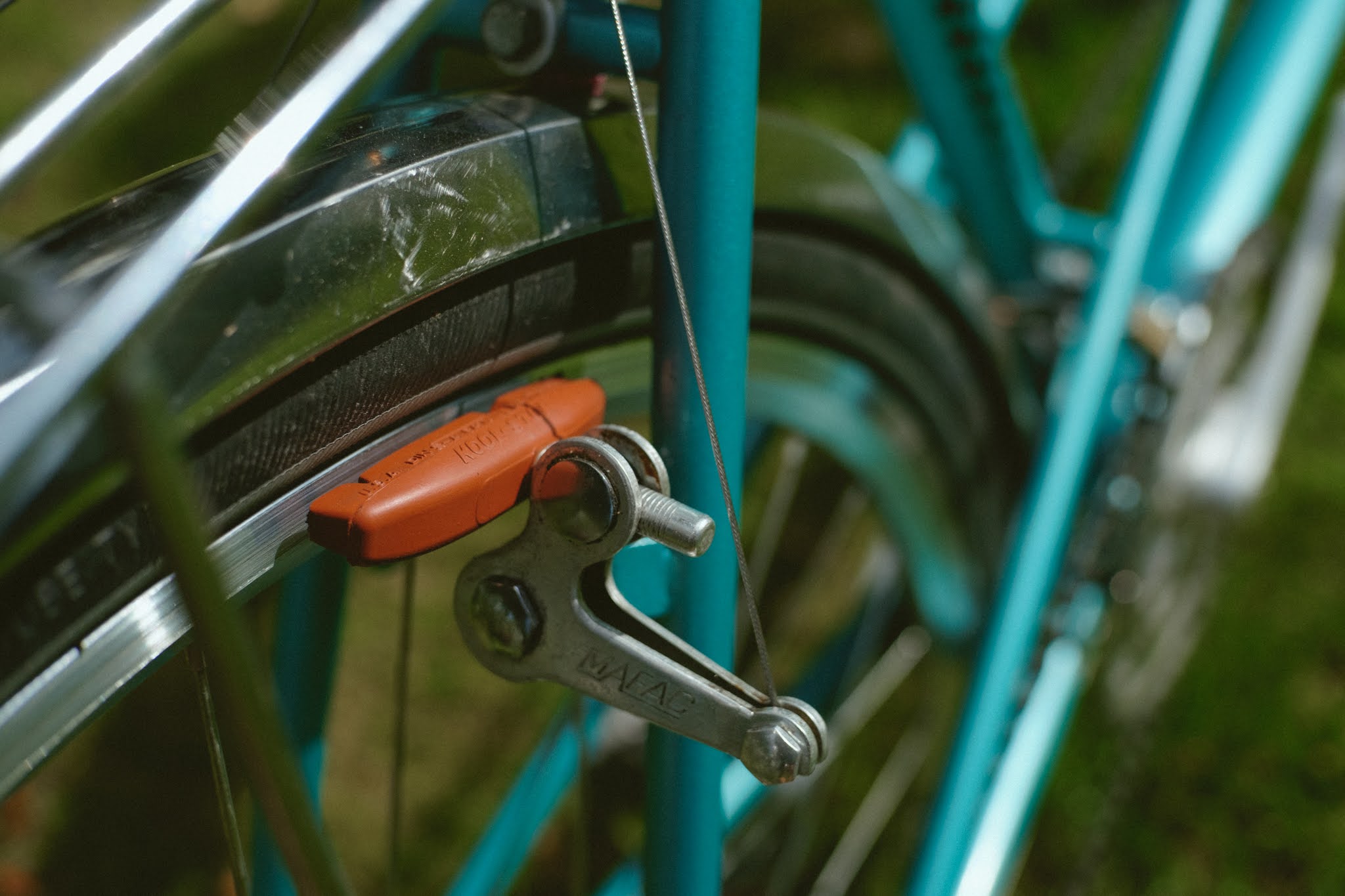
The absolute stopping power they can achieve, particularly in the wet, is phenomenal. With just the right level of toe-in they can give wonderful modulation without feeling spongy, and if you choose to go all in and clean your rims with rubbing alcohol and an abrasive cloth you might actually begin to wonder why the industry decided to embrace discs.
Get The Leadout Newsletter
The latest race content, interviews, features, reviews and expert buying guides, direct to your inbox!
For now at least they are available in a range of models to suit different systems, and a whole host of colours, but unless you’re running carbon rims then just get the salmon ones and thank me later.
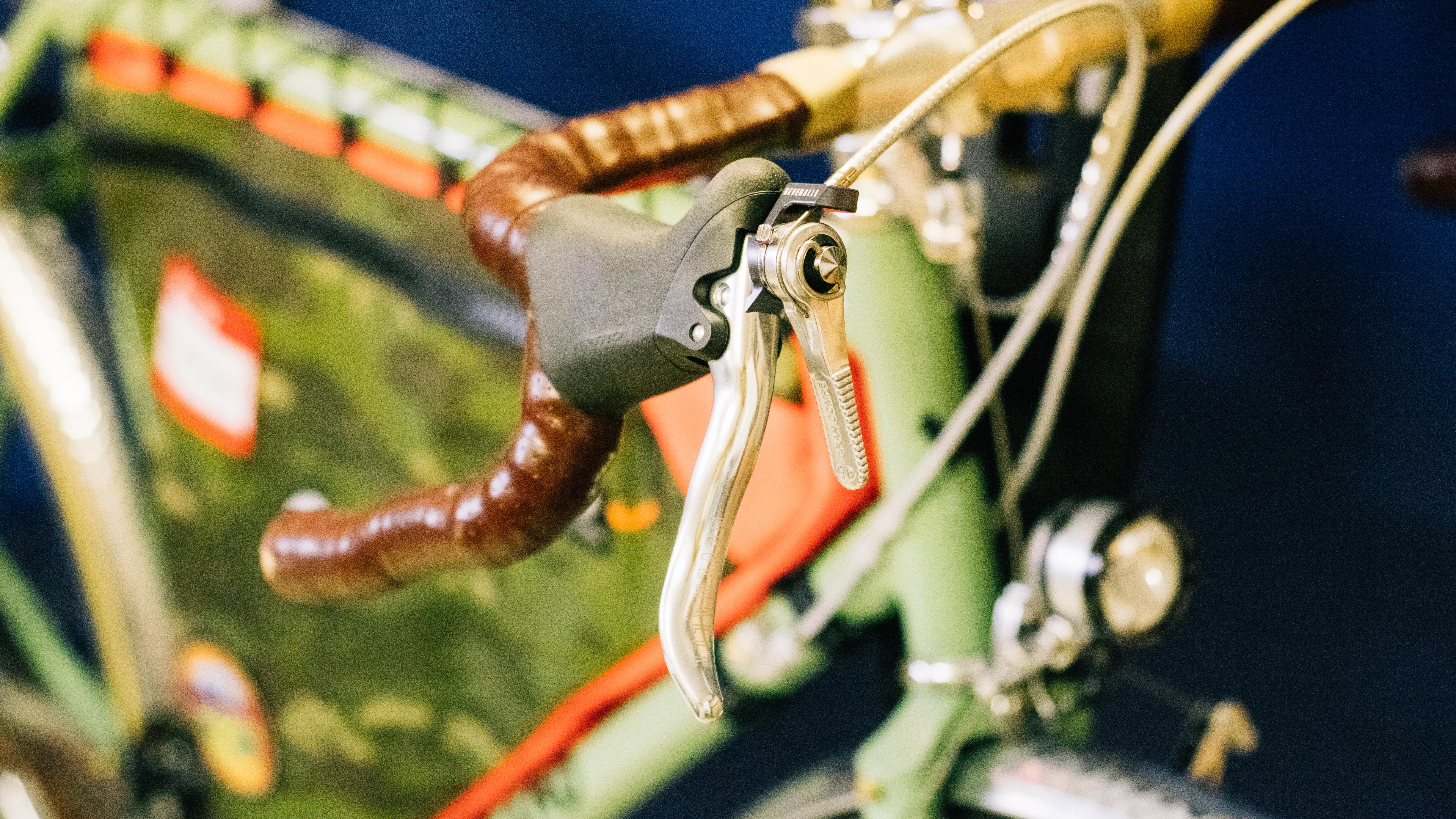
Gevenalle Audax with Dia-Compe shifters
Ok bear with me, I know this is rapidly descending into a retro love-in. As much as I love the best road bikes like the Canyon Ultimate, I don’t rate it much as a commuter, a grocery getter, or a scenic pootle wagon. I firmly believe there is more to performance than whether a bike is fast, and I also am of the opinion that the less time to spend maintaining a bike the better.
Friction shifting, if you’ve not used it lately (forgivable, given it hasn’t been the norm for a couple of decades now), is wonderful. It is almost entirely maintenance-free; however good cable shifting is now, it’s going to go out of index sooner or later, and this simply never happens with friction shifters.
I will admit, though, that modern shifting systems have played a blinder in terms of not having to take your hands off the bars. Enter Gevenalle, from Portland. What if, someone presumably thought, we just bolted a friction shifter to the front of a normal brake lever? The result is the Audax shifting system, though the company does make more racy cyclocross-facing models.
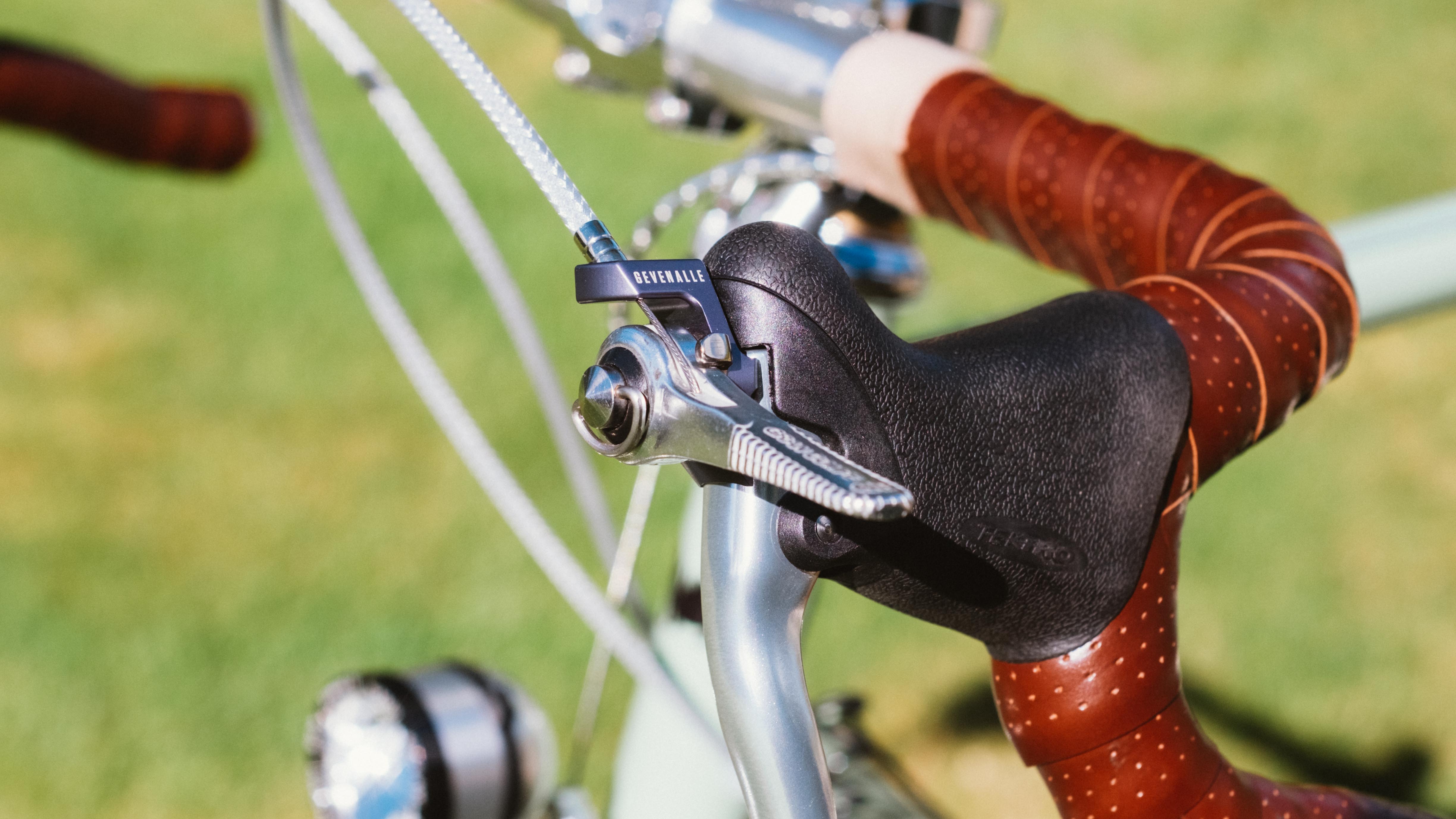
It looks a little odd, at times it’s less ergonomic, and you can’t easily pop the levers open to release the brakes as you can with normal standalone canti levers, but what you can do is shift seamlessly all the time (once the muscle memory is dialled in). You can shift across the whole cassette faster than any electronic system, if you ever need to, and you can pop on any friction shifter levers you care to use, making it a more or less universal system too.
I choose to use these beautiful ENE shifters from Dia-Compe, which feature a micro ratchet. Rather than being friction-limited in both directions it adds the ratchet into the mix when you’re releasing the tension to keep the feeling similar in both shifting directions. They’re a joy to use, and lovely to look at too, but I’ll accept that slapping these on the Canyon might be a rogue move.
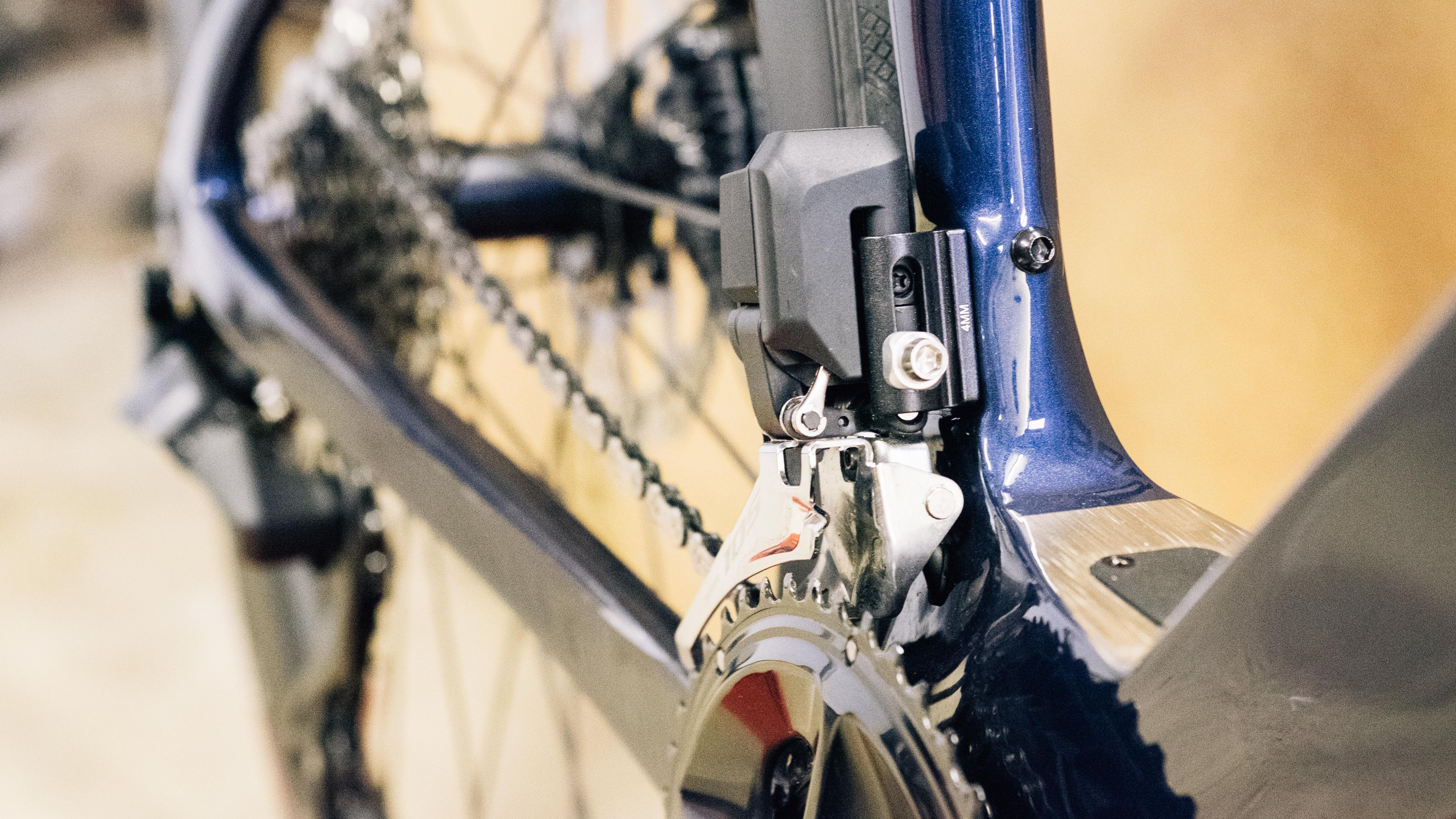
Shimano Di2 Shifting
I bet you thought I was going to say something daft like a heavy leather saddle next, didn’t you? Friction shifting is ace for a town bike, but when I want to go fast the electronic shifting offered up by Shimano has been revelatory.
I’ve been fortunate enough to ride the current 11sp GRX Di2, as well as electronic Ultegra on my long-term Canyon Ultimate, and the new 105 Di2 on a Ribble Ultra SL, and each time it’s been fantastic. I’ve submerged it in surprisingly deep puddles, I’ve ridden it filthy, I’ve constantly shifted under load, and cross-chained without a care, and it’s behaved flawlessly.
I cannot really pick a single one of the three I have tried, as it’s more the system that I am enamoured with. Setup wasn’t nearly as scary as I assumed it would be, the shifting is impeccable, and the only time I ran out of battery was when I forgot to charge a fresh test bike upon delivery.
While I am yet to ride Campag’s electronic offerings, if I were spending my own money I’d take Di2 over the offerings from SRAM, which I have ridden, despite being a big fan of SRAM’s interchangeable battery situation. I am a little sad to see how much the new 105 Di2 costs, given it represented the gateway to true performance riding for me, but given how good Tiagra is now it’s just a shift towards 105 being a true racing groupset instead. Where that leaves Ultegra I’m not so sure, but I’m digressing now.
Groupset scarcity is still a big issue in the industry, so if you want a bike with Di2 then we have a list of bikes with Shimano 105 Di2 for you to save you from hunting too hard.
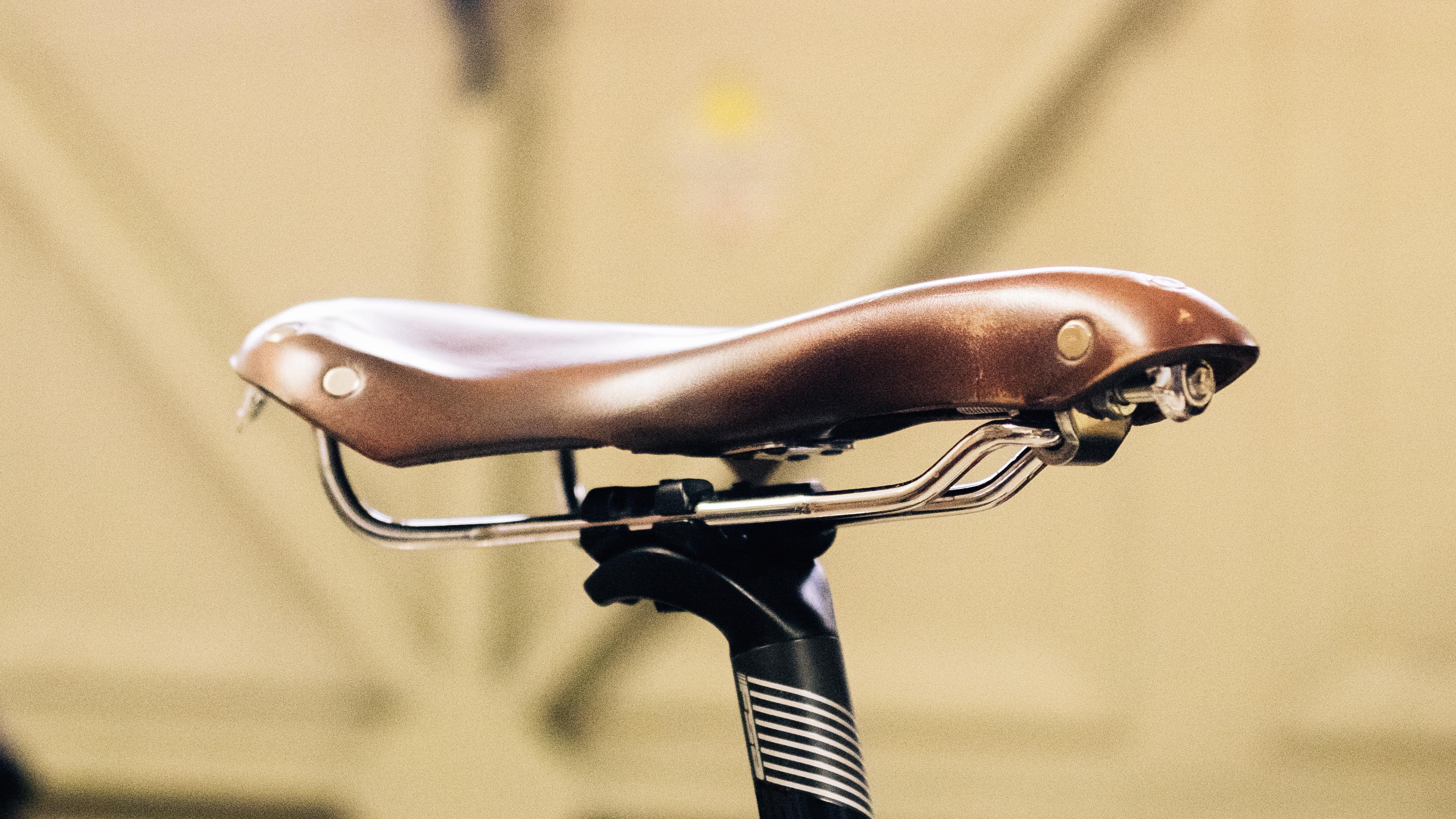
Brooks saddles
Let's talk comfort... The longer you ride the more critical comfort becomes as a performance metric. I can put up with even the most uncomfortable bike for a couple of hours. But beyond that, when I want to actually enjoy rather than endure a long ride, I opt for maximum posterior comfort and more often than not revert to a Brooks of some form or another.
My custom bike runs a B17 that’s been slowly worn in over a couple of years, and recently I’ve been very much enjoying the Swallow on my Fairlight Secan, alongside matching leather bar tape in both cases. I’ve also in the past run a B17 short nose (technically the women’s version, but it’s just shorter) on my mountain bike, and a cutout version of the same on my pub bike.
They aren’t for everyone, least of all vegan weight weenies, but for those willing to push through the break-in period, you will be met on the other side with bottom nirvana. Truth be told the break-in period isn’t that bad. There are endless forum posts telling you that you should soak it, or rub linseed oil into it, or sacrifice a goat at the full moon in order to achieve the best fit, but all I’ve ever done is a liberal coat of proofide underneath, and a thin one on top followed by a two hour ride in the pouring rain. After that, they’ve been more or less broken in. The underside of the Swallow I’ve also waxed to protect it from too much spray while riding without mudguards.
One reason I like them so much is they seem to account far better for the idiosyncrasies of my pelvis. Looking at how the Swallow in particular is broken in, it is clear I carry noticeably more weight on my right-hand side, which explains why on most saddles I suffer with saddle sores on that side. It may be something that can be accounted for by a bike fit but may also be irreparable thanks to a twice-slipped disc that has had myriad knock-on implications. Whether there is a permanent fix or not I am yet to find a more comfortable perch than a perfectly broken-in Brooks, and so in the interim, I will continue to use them wherever possible.
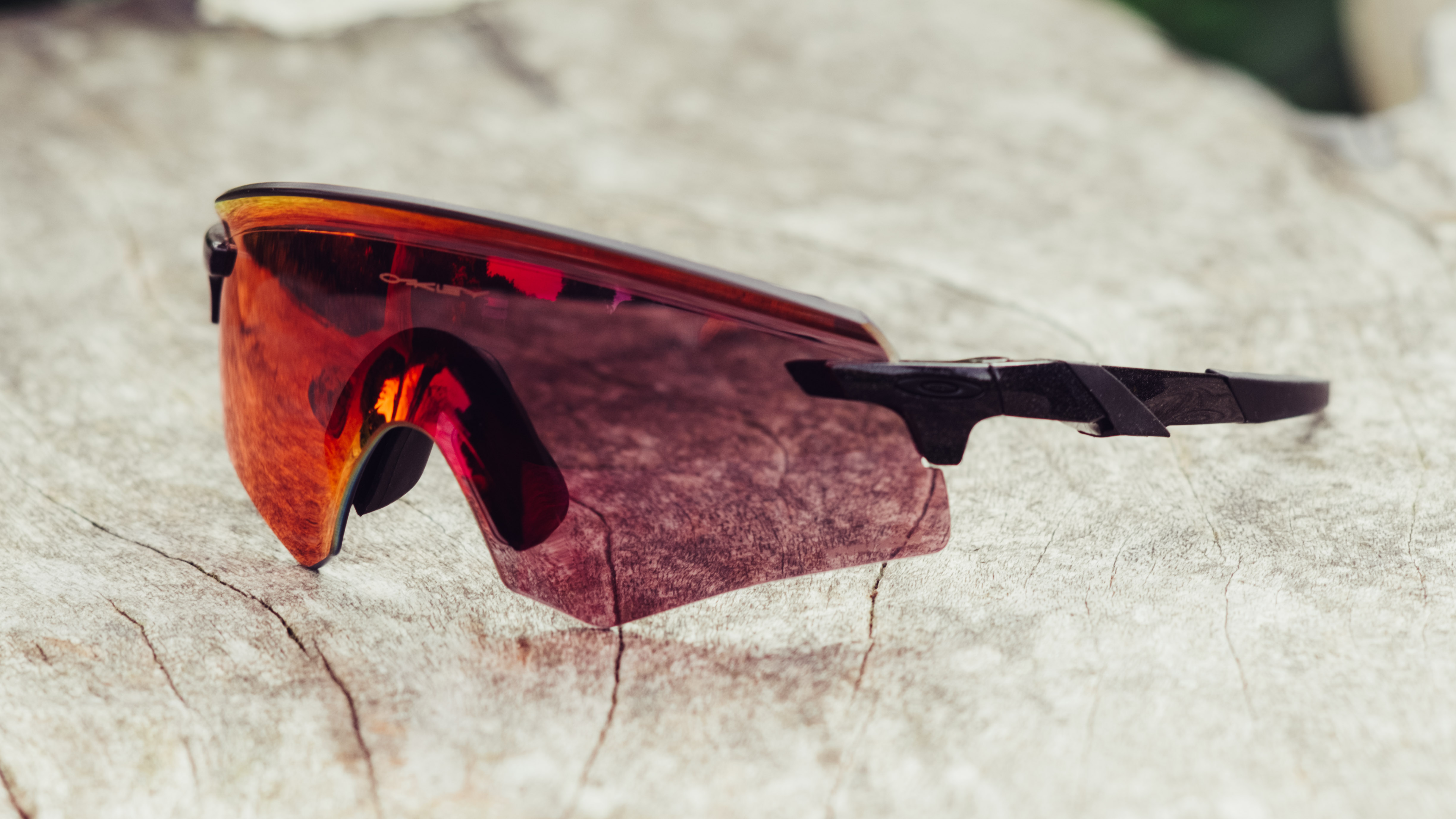
Oakley Encoders with Prizm Road lenses
The number of models out there vying for the title of best cycling glasses is staggering, and I’ve tried a good load of them this year. Some shine in the comfort stakes, others in the field of view, and still others stay put and are champions of the retention factor. The Oakley Encoders though, do most things extremely well.
They don’t have the field of view of the Oakley Sutros, or many models from POC, and being marginally smaller they don’t offer quite the same wind protection, but the Prizm Road lenses are simply incredible in the range of light conditions in which they can happily operate. This is the reason, as well as the fact they stay absolutely where they are told, that I consistently reach for them over other models.
I’ve used them in bright summer sunshine, stared straight into sunsets while heading home, and not been blinded. I have also kept them on quite happily after then the sun has set and the light dwindles, far beyond the time at which I’d be putting my lights on. It also helps that they look cool, which I am also a sucker for.
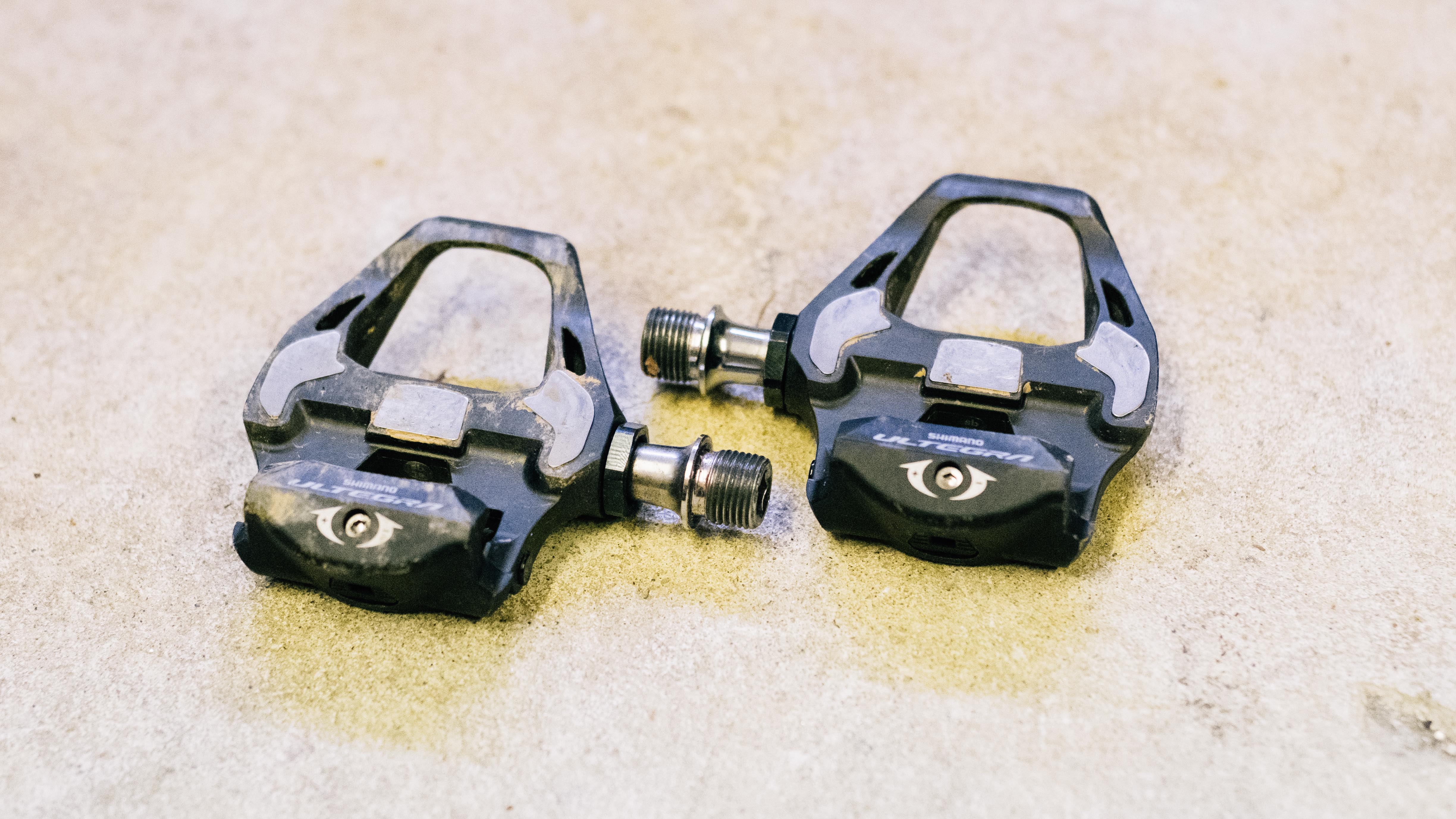
Shimano Ultegra pedals
Prior to joining the team I had staunchly used Look pedals and cleats on my road bikes exclusively. Basic Keos, all the way up to the latest Keo Blade. This year I gave Shimano pedals a try, after blowing the spring out of my Keo Blades after using them on some filthy gravel like an idiot. Truth be told I can’t see myself ever reverting back to the French contingent.
While I have only had the pedals for a year now I have had Shimano MTB pedals that I’m relatively sure will last longer than I will, so the longevity I am not overly concerned about. My main reason for preferring them is the wider body and cleat; my foot feels more stable, and more able to comfortably put the power down. That and they have a better tendency to hang the right way up for clipping in, which is handier than expected.
This isn’t to say my Looks ever felt wobbly or anything, but having assumed the two systems were effectively equivalent I was pleasantly surprised to notice a difference.
They've also got a five star review and sit very much within the list of the best road bike pedals, so It's clearly not just me.
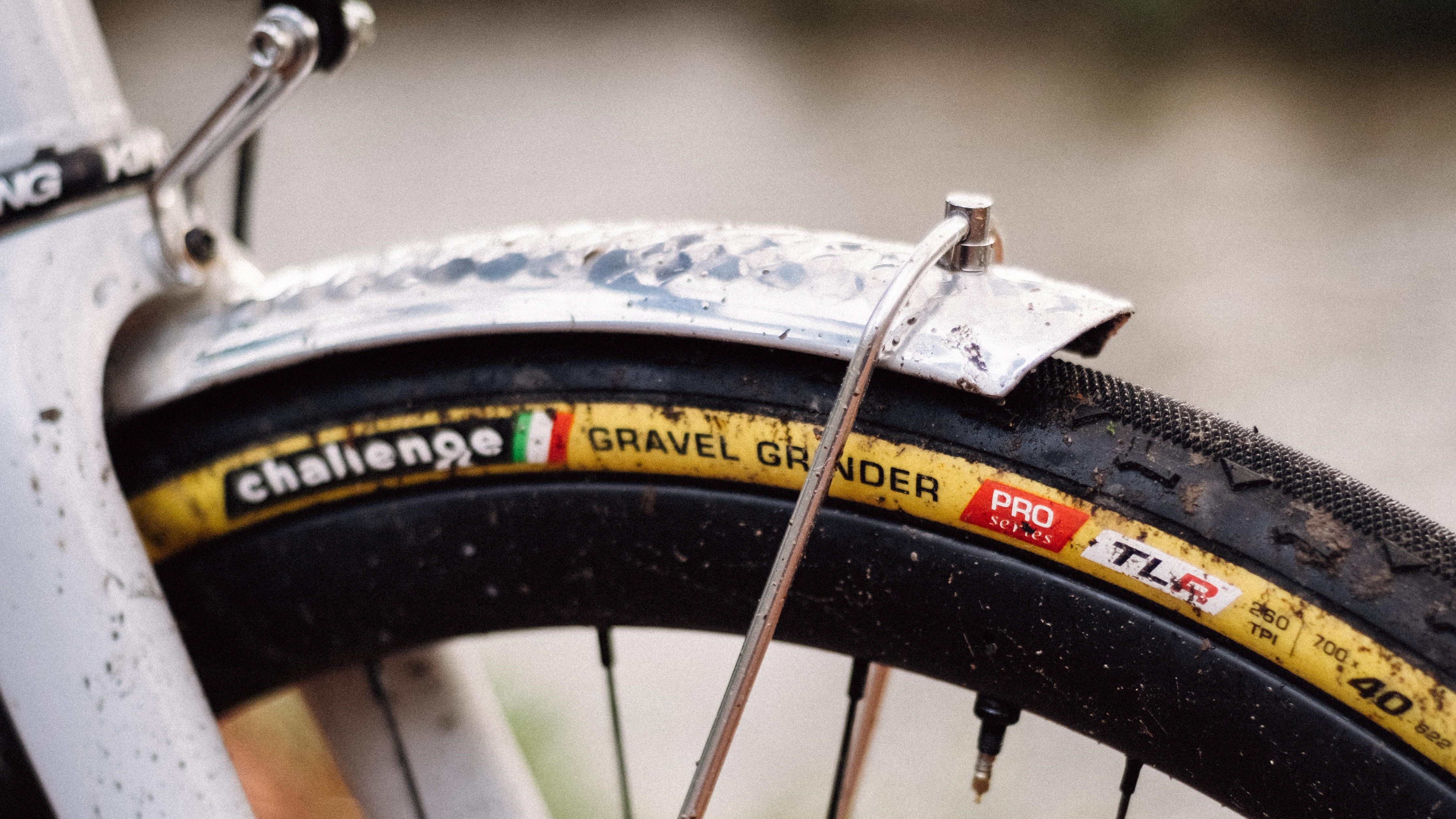
Full length Velo Orange fenders, with an extra front stay
Even the best muduards aren’t pro, but professional racers don’t have to maintain their bikes. They also tend to use bikes devoid of mudguard mounts, aiming for low weight, and aerodynamic benefits too.
I, on the other hand, spend half the year at least ploughing through leaf mulch on backroads. Until recently most of this leaf mulch ended up in equal parts on my drivetrain, and on my arse, thanks to a pig-headed determination to cosplay as a WorldTour professional.
This year, with my custom bike to begin with and later on my long-term gravel bike, I’ve been running full-length, metal mudguards from Velo Orange and have slowly begun to feel something of a fool for not using them to date.
They are a little heavier than plastic options, but in return, they look beautiful and bring durability to the party. The best thing about them, and other full metal options, is that you can counteract the annoying wobble that often occurs in the bit that sticks out beyond the fork crown by installing a second stay, which also helps radius them correctly, again for aesthetic reasons.
I’ll probably take them off in summer so I can fit a wider range of tyres and more easily swap from 700c to 650b, but I don’t think I’m going to get tired of being mostly dry and clean despite riding through absolute filth anytime soon over the rest of the winter.
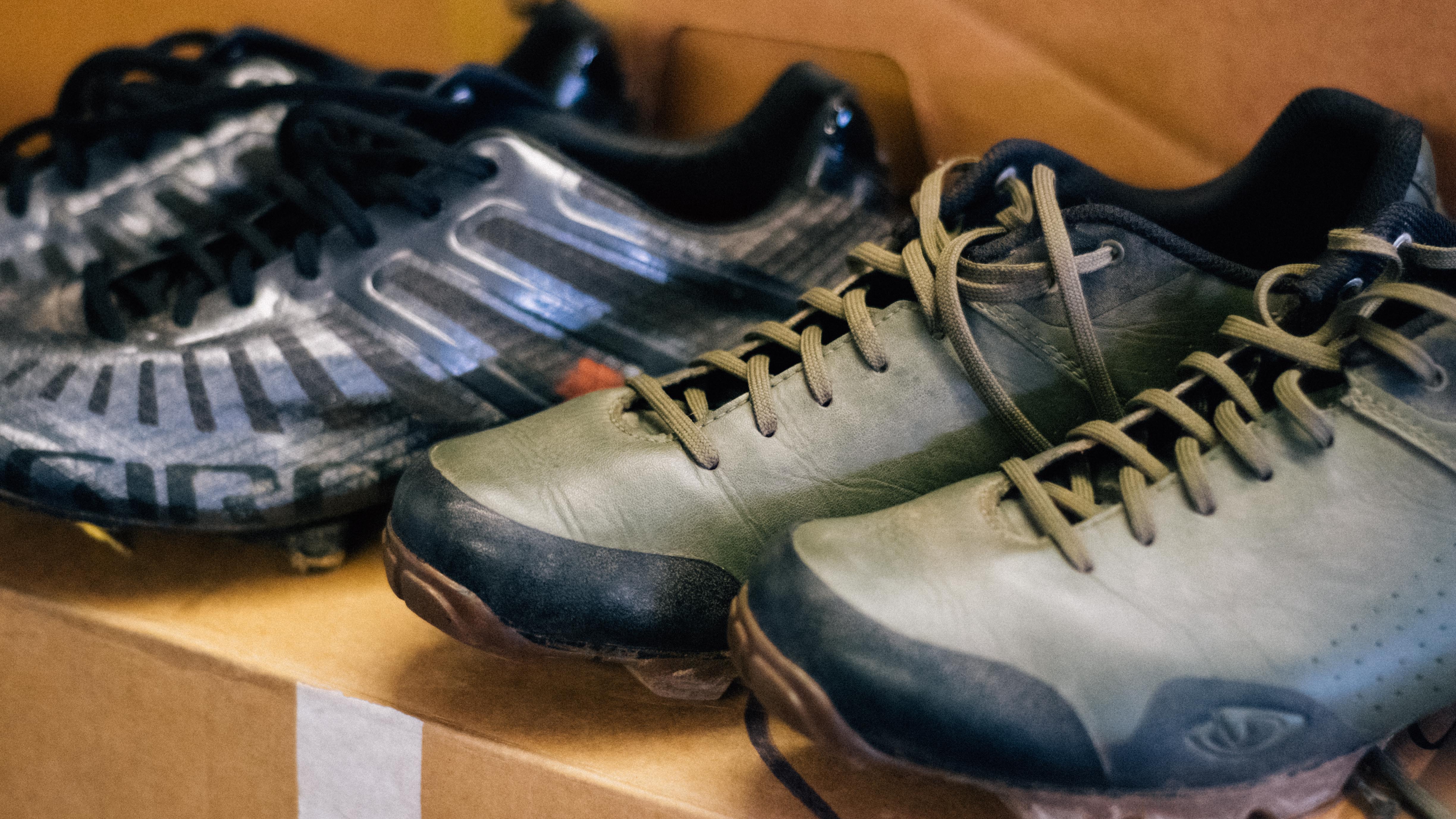
Giro lace-ups
I have been plagued by a bad knee lately, which has somewhat stalled some of the shoe testing I was hoping to get done to update our list of the best cycling shoes. I did manage to get a couple of pairs reviewed, but every time I went back to my familiar favourites, the Giro Empire SLX or the Privateer for road and gravel respectively, there was a near-audible sigh of relief from my feet. These are my third pair of Empires, by way of an illustration of how much I like them as a shoe.
The Empires especially are clearly a low-weight, high performance shoe, much more so than the composite-soled Privateers, but this isn’t the reason I find myself drawn to them. I have fussy feet. I have quite high arches and a relatively wide forefoot, and the infinite adjustability of laces means I can leave enough room while still having enough foot retention.
The fit isn’t as secure as something like the S-Works Ares, but for general use this doesn’t bother me at all. The Empires especially, with the adjustable arch support insoles make me feel like Cinderella when I put them on; it takes a few rides to really dial the fit in perfectly, but once you’ve got it sorted it’s brilliant.
I’ve got the Carbon soled Empire VR90 for some gravel testing too, so come back later to see how it measures up compared to the other lace-ups.
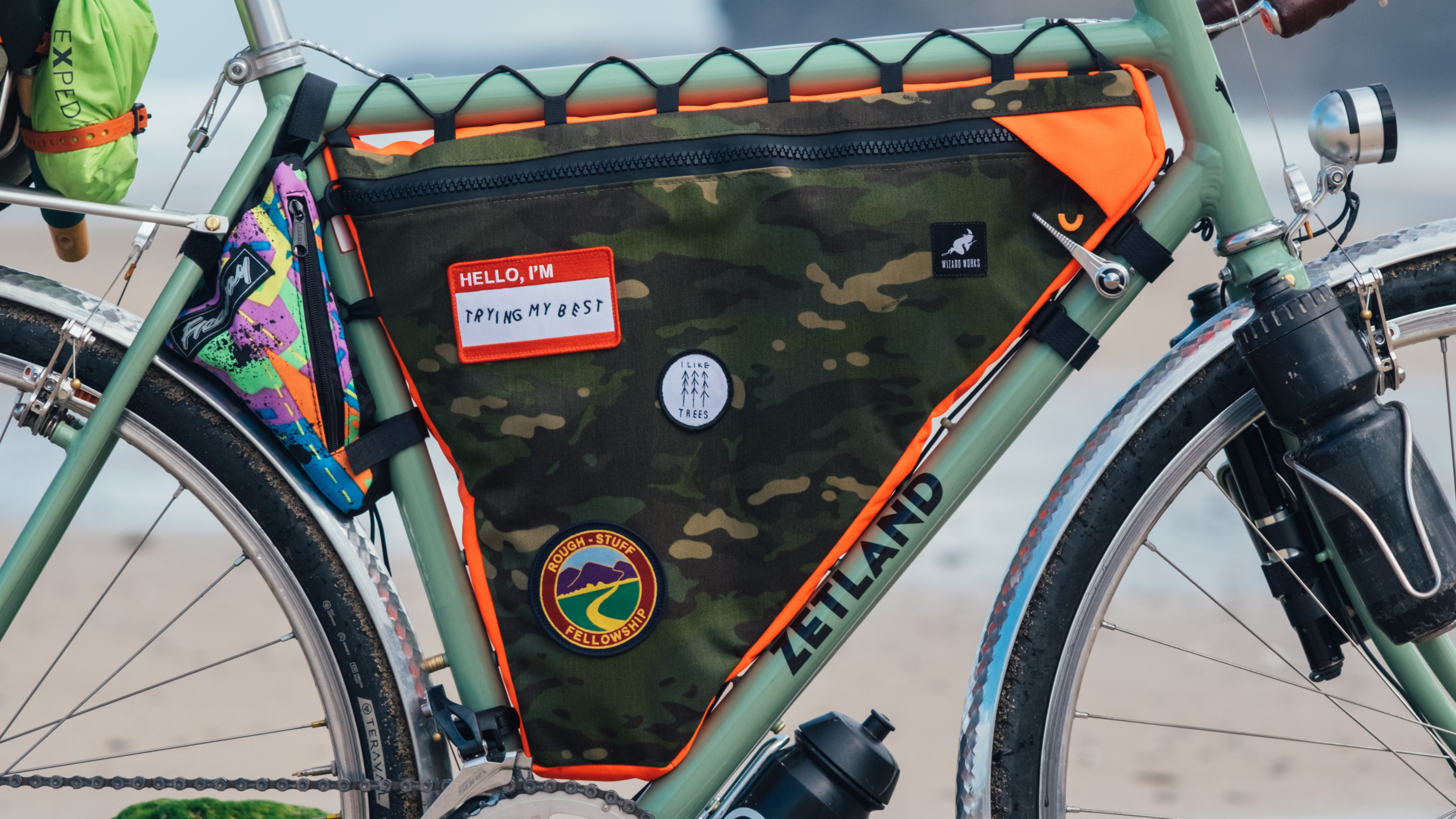
A Wizard Works full frame bag
Before embarking on a disastrous bike tour in France that left me with a ruined knee and my friend with a separated shoulder, I asked the good folks at Wizard Works very nicely if they’d make me a full-frame bag.
While the bag itself is magnificent, with its camo outer, bright yellow inside, patches and (my favourite feature) a pocket on the non-drive side specifically designed to carry a couple of Ordnance Survey maps, this is more a love letter to the full frame bag as a concept.
After returning from the tour I took the bag off for a while, and missed the ability to just chuck whatever I wanted into it without really worrying about space. You’d be amazed at how much space your frame offers for storage, for basically no aero penalty, so I put it back on after a month or two without it and haven’t looked back. It comes with me on shopping trips, gravel rides, pootles etc and will come with me again on some bikepacking journeys. I can throw proper layers in it for cold rides, or snacks, or tea, or a pizza. I don't have to worry about leaving binoculars behind, or whether I should bring a warmer hat.
Unless there’s a bona fide reason to remove it I can’t really see myself ever taking it off. If you do go down the route of getting a custom framebag I heartily recommend getting one that’s directly mounted to your bottle cage bosses, wherever they may be. It looks better for one, but it also means fewer straps that can potentially rub your frame.
Depending on when you read this, the Wizard Works books for custom orders may or may not be open. I've been reliably informed they will open the week commencing 12th December, but it's worth just checking regularly if this doesn't turn out to be the case.
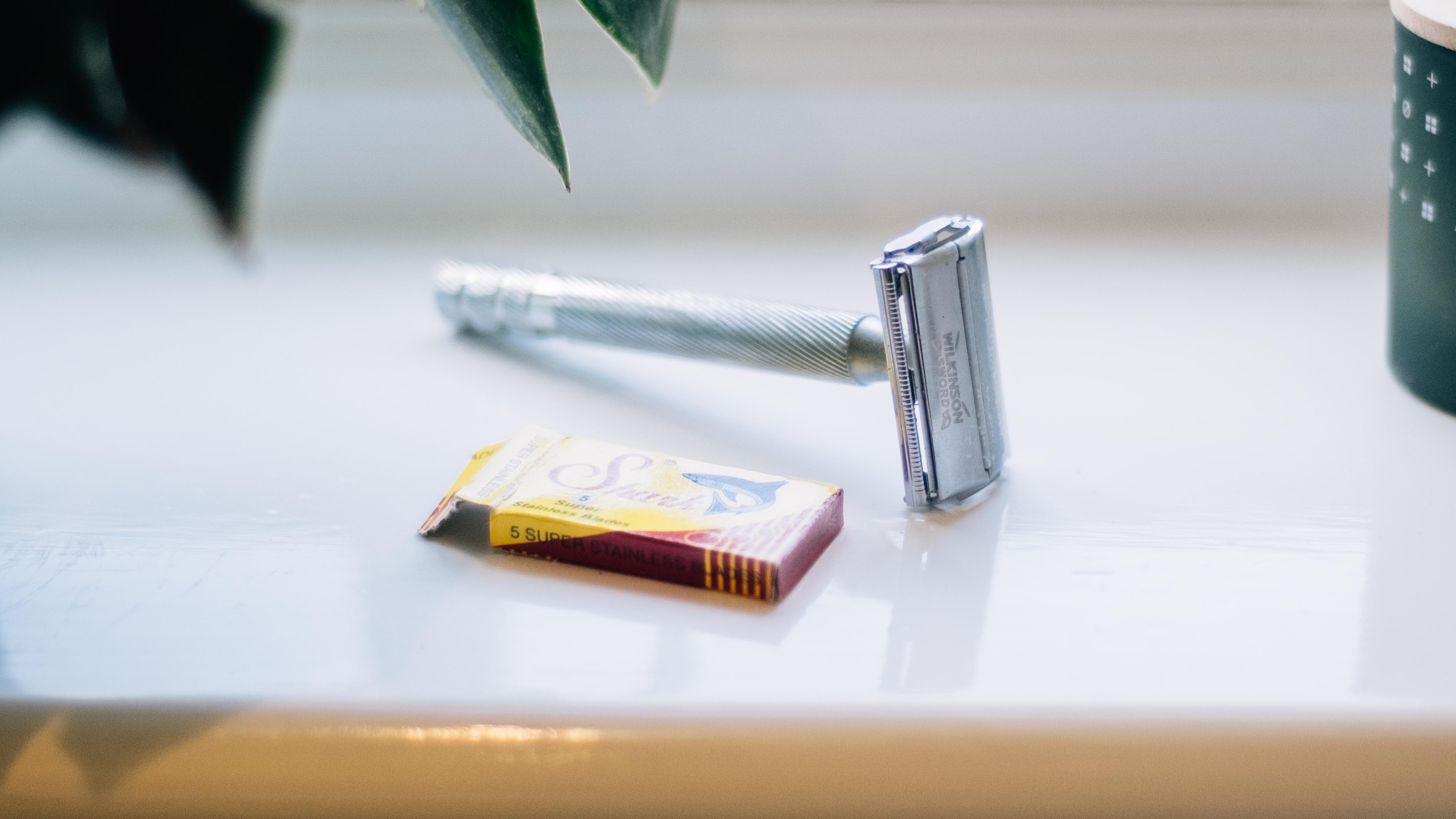
A single blade razor
The razor itself isn’t the point here, though if you’re curious it’s a Wilkinson Sword model which I do not know the name of. The important bit is that it holds a single, extremely sharp razor blade. Not five, not six, but one. No pivoting head, no exfoliating or moisturising strip. No vibrating motor, no daft name (I’m looking at you, Gillette Fusion Power Stealth). Just one sharp blade.
Except when circumstances force me to, I will never again use anything but a single blade razor for removing my body hair - this goes for face and legs. It cuts closer, and with less irritation than anything else, and there are two more key benefits besides. The first is that, unlike normal razors, there is no plastic to chuck in the bin. Just a metal razor blade once it has become dulled. The second is that it’s noticeably cheaper. A pack of 100 blades will set you back under £7, which will last me more or less a year, and I shave both my legs and face year-round. Considering a four-pack of Gillette Fusion 4-blade refills costs over £11 you can see the gulf in terms of spend.
There is an initial investment of time. You need a bit of practice, and you need to find a razor blade that you get on with. I tried six or so in a variety pack before settling on the pleasantly named Shark Super-Stainless blades. You can also try Lord Platinum, Tiger Platinum, Gillette 7 O’clock, Perma-Sharp Super, Dorca Titan, Euromax… ok maybe there are daft names.
Once you’ve found the one for you though, you will be blessed with smooth shaving, a heavier wallet, and the knowledge that you haven’t knowingly killed any sea turtles.
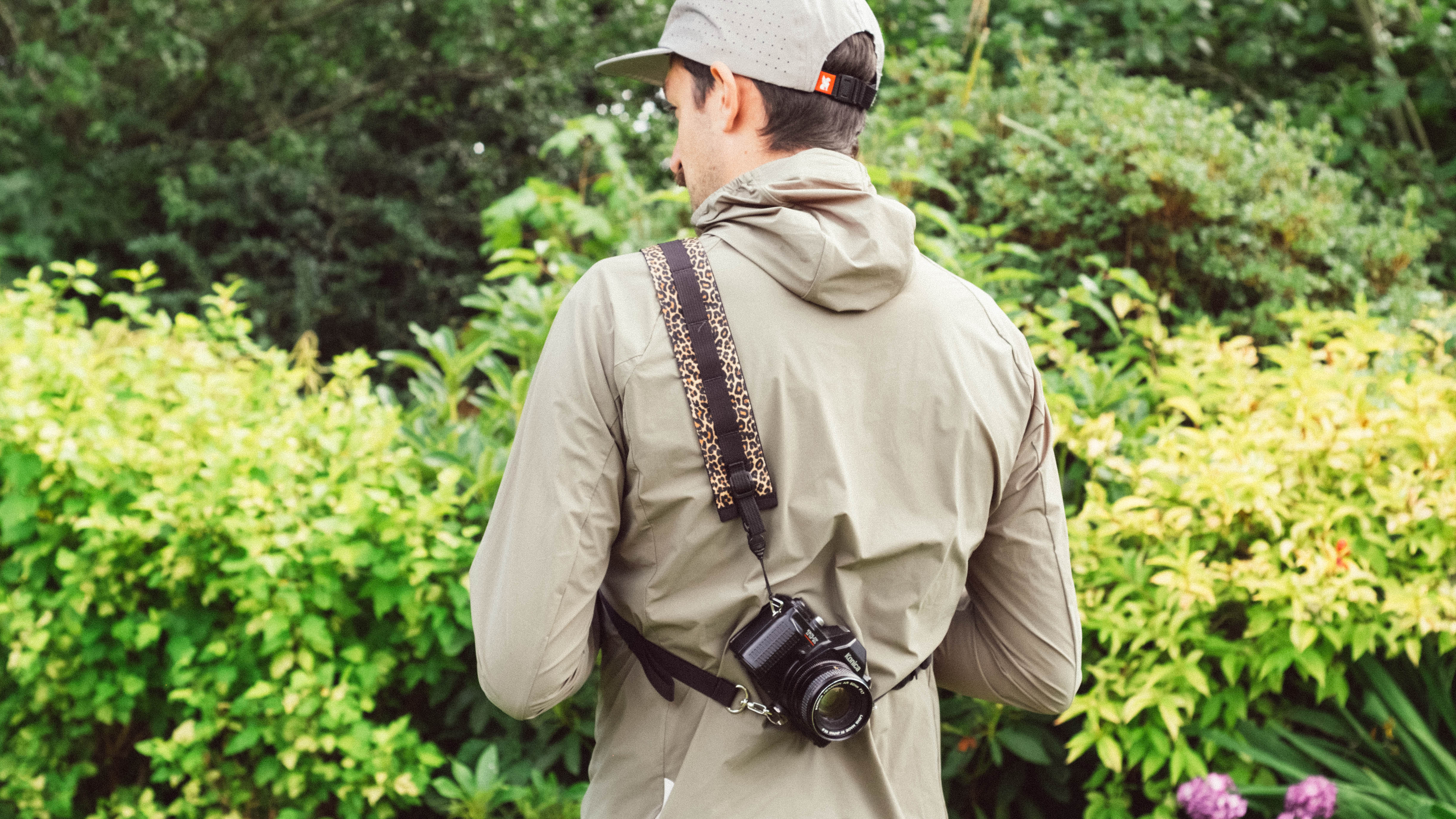
Outer Shell Camera Strap
I love taking pictures while out riding, but riding with a camera is, in most cases, a pain. In a bar bag or frame bag the camera can be rattled about in a concerning way, particularly when riding gravel, so I try and keep the camera on my person to add some suspension into the mix.
If it’s mucky it tends to go in a bumbag, lest it get covered in spray, but when it’s dry I have found no better system than the Outer Shell Camera Strap. Yes, I am taken by the fact that it is leopard print, but it’s mostly because it keeps the camera absolutely in place while riding, and the stabilisation strap uses a magnetic Fidlock clasp, meaning it can be undone on the move one-handed for shooting while riding.
Sure, Instagram reels are taking over, and TikTok is only video, but for those of us still in love with still images this is most likely your best bet for riding with a camera.
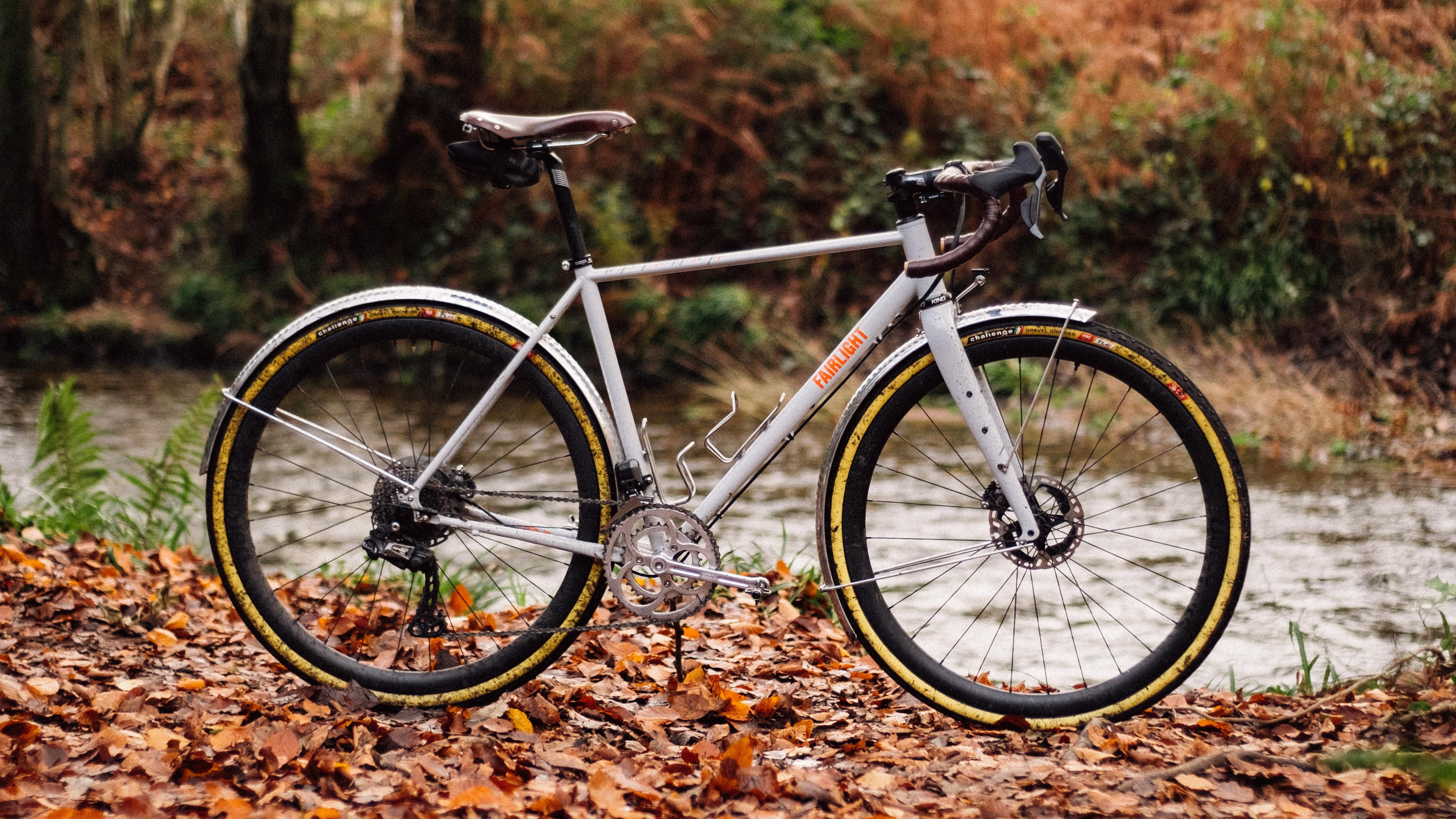
Fairlight Secan
The Fairlight Secan is my long-term gravel test bike, and to my mind, it's easily one of the best gravel bikes on the market right now. It is so far the only bike I’ve seen fit to award five stars in a review. I’ll not go too in-depth here, because you can read all about it in the review, but since concluding the standard review I have set about trying to find something it can’t do, and have so far failed.
It can do normal gravel riding, rowdy, techy riding, it’s compatible with more or less anything, can take mudguards, is extremely comfortable, looks beautiful, it's perfectly capable as a bikepacking bike, and I'm beginning to run out of scenarios to test it. The only things that remain, given that it’s recently excelled while set up as some kind of gravel-audax hybrid, are to see if it can hold its own at cyclocross, and as an endurance road bike. After that I suppose I'll have to take it to the skatepark, where I presume it’ll also give the BMX a run for its money.
In short, it’s wonderful, and I have become dangerously attached to it.

Will joined the Cyclingnews team as a reviews writer in 2022, having previously written for Cyclist, BikeRadar and Advntr. He’s tried his hand at most cycling disciplines, from the standard mix of road, gravel, and mountain bike, to the more unusual like bike polo and tracklocross. He’s made his own bike frames, covered tech news from the biggest races on the planet, and published countless premium galleries thanks to his excellent photographic eye. Also, given he doesn’t ever ride indoors he’s become a real expert on foul-weather riding gear. His collection of bikes is a real smorgasbord, with everything from vintage-style steel tourers through to superlight flat bar hill climb machines.